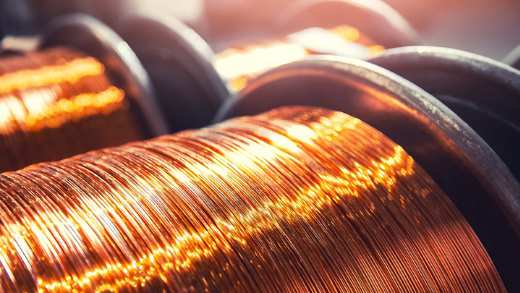“Climate change is really the kind of threat that we as humans have not evolved to cope with. It’s too distant. It’s too remote. It just is not the kind of urgent, mobilising thing.”1 These words from the eminent psychologist Daniel Kahneman perfectly capture the difficulty in persuading people to address the climate emergency.
Where to start?
There are numerous different approaches being advocated to reduce warming gases in the atmosphere. Where can changes be made, fast? Analysis from Project Drawdown, a non-profit organisation and leading resource on climate solutions, is helpful, assessing what can be done immediately to bring forward the point when greenhouse gases (GHGs) decline.2
As Figure 1 shows, change starts with us.
Some evolving technological approaches like carbon capture and storage (CCS) fall outside Project Drawdown’s analysis. However, CCS is included in the projections (‘model pathways’) used by the Intergovernmental Panel on Climate Change [the United Nations body that provides scientific updates on climate change]. Outcomes from early usage have been mixed, but as the approach is getting increasing attention, it is included in our analysis, too.
The question then is: what’s on the horizon? What do we need to bring big results, and do we need new tools in the box?
Figure 1: Questions of scale (gigatons CO2 equivalent reduced/sequestered, 2020–2050)3

Source: Project Drawdown, 2021
People power: Change behaviour
Being more mindful of our actions is a powerful (and swift) climate solution.
We have the power to make changes – now.

Think
Highest impact actions:4
- Cut family size
- Avoid unnecessary travel
Education for all = more change
Human fuel: What’s on your plate?

Selecting proteins carefully and minimising food waste bring big and immediate environmental impacts.
Figure 2: Comparing carbon costs (GHG emissions per kg)5,6,7

Source: Poore and Nemecek, Science, June 1, 2018; Science Nordic, May 17, 2017
Waste not, want not
- 30 per cent of food produced worldwide is wasted8
- Less waste could trim GHG emissions by eight per cent
Our research shows there isn’t good awareness of what people can do or what governments are doing on climate change. But most people think they have a responsibility to act and are taking some actions already, like changing their diets. Education is important, but it is even more important that we make it easy, attractive and normal to take action. Messaging is only part of what we need to do – we need policies to support and enable change
Next? Vegetarian diets, including algae rich in Omega-3; lower-carbon proteins; and carefully avoiding waste can significantly reduce environmental impacts.
Protect tropical and temperate forests

Forests are a major carbon sink, and the removal of cover has diminished the amount of CO2 locked into biomass and soil.
This triggers macro-changes to global temperature regulation, biodiversity and the water cycle.
Becoming woodland custodians
- Forest cover down 33 per cent since 17509
- Global timber demand forecast to rise almost 300 per cent by 205010 for construction, packaging, bioenergy
Forests play a critical role for life on our planet. And yet, just like oxygen, we risk taking them for granted until they are gone
Next? Intensify conservation efforts and reward carbon farmers. Challenges include addressing sustainability and governance issues to ensure schemes aimed at storing carbon do what they say.
Buying carbon offsets can help put private capital to work to promote sustainable carbon farming. Equally, buying land to generate carbon credits offers a hedge against the rising cost of carbon.
But ‘success’ will depend on how sensitively existing forests and newly planted woodland are managed. And offsets are no excuse for not reducing emissions.
Figure 3: Illustrative sequestration from managed woodland (tCO2e)11

Note: tCO2e = tonnes (t) of carbon dioxide (CO2) equivalent. Source: ‘Using the WCC carbon calculation spreadsheet: Version 2.4’, Woodland Carbon Code, March 2021
Forestry is a long-term business. It is a challenge for land managers to commit to really long-term change. You are permanently moving from where you might have an annual decision to make about the way the land is put to use, to something set out years in advance
Improve land management and restore farmland

Agriculture is a major source of GHG emissions.
The fuel used in commercial land management, methane from ruminating livestock and carbon reduction from depleted soils all have an impact.
Caring for the soil
- Net carbon reduction in soil since modern commercial agriculture: 130 billion tonnes12
Without healthy soils, we don’t have the basic building blocks of ecosystems and, hence, nature is in trouble. That is primary, but there are other reasons why soils are important. They relate to the soils’ productive potential, their ability to underpin agriculture and food production, and ultimately the security of our lives. Soils are also massive reservoirs of carbon and their mismanagement is a serious issue for climate change
Figure 4: Revitalising biochar and contributing to sustainable energy13

Source: Farm Energy and Aviva Investors, 2021
Biochar is arguably the only way to recapitalise soil. Heating straw or timber by-products at high temperature in the absence of oxygen converts them into forms whose natural analogue – charcoal – naturally degrades over longer timescales (hundreds to thousands of years, rather than months). So, adding biochar can gradually increase soil carbon levels, without committing future biomass resource
Next? Measuring soil sequestration better and more comprehensively; commercialisation of biochar as feed additive, in water treatment, insulation, ‘electrosmog’ protection; ‘next generation’ bioenergy crops.
Protect and restore marine ecosystems (including wetlands)

Marine ecosystems are important carbon sinks; some sequester carbon rapidly.
Preservation and restoration of degraded wetlands will improve global carbon stores.
A lighter touch in the marine world
- Degrading coastal ecosystems release one billion tonnes14 of C02 annually = 19 per cent of emissions from tropical deforestation
Just as trees and other plants on land draw down carbon from the air through photosynthesis and then store it, the vegetation in marine ecosystems also sequesters carbon. Mangroves, saltmarshes, and seagrass habitats actively fix and store ‘blue carbon’, sometimes faster than the sequestration carried out in mature tropical forests.While a forest carbon store is mainly in the biomass, in trunks, stems and leaves, seagrass and saltmarshes store carbon in the rich sediments that develop around the plants, in stores up to six metres deep. Rewilding marine and coastal ecosystems around the world could sequester more than one and a half billion tonnes of CO2, and that excludes the carbon stored in coral reefs, seaweeds, shellfish beds and seabed sediments
Figure 5: Algae’s multiple roles

Source: Aviva Investors, June 2021
Next? Algae: rapid yields for super foods and fuels?15
Manage refrigerants more efficiently

Cooling devices are essential for preserving food and medicine and increasingly being used to cool homes and buildings in climate extremes.
But today’s refrigerants have a significant impact on the climate.
Chilling
- Florinated gases in refrigerants have much greater warming potential than CO2 and some (banned) compounds damage the ozone layer
- Cooling equipment leaks while operating, then there is an end-of-life challenge
- Enforcing existing quotas and cleaning up are environmental priorities
We are going to be deploying somewhere between 13 and 18 cooling devices per second for the next 30 years, and we are still not going to deliver cooling for all
Figure 6: Climate impact of refrigerants (kg CO2 equivalent)16

Source: UK Government Greenhouse Gas Conversion Factors 2021
Next? Accelerate development of alternative refrigerants, and secure end-of-life.
Harness the sun

The sun is a powerhouse that produces the equivalent of 38,460 septillion (3.846 ×1026 W) watts per second,17 more than enough to meet current human energy requirements.
Recent innovation has led to capacity forecasts being revised up.18
But there is a challenge: how to store it.
Hot hot hot
- Solar: Already delivering the cheapest electricity in history19
Figure 7: Lazard levelised cost of energy comparison (per cent)20

Source: Lazard, October 2020
We are working on tandem or multi-junction cells, enabled by the discovery of the photovoltaic properties of a new material family known as perovskite. Perovskite operates as well as the best silicon but can be processed relatively easily at low temperature. By layering different absorbers on top of each other in a cell, we can optimise for different parts of the spectrum and boost overall efficiency. We only discovered the potential of perovskites comparatively recently; it’s equivalent to being in 1965 in silicon technology terms. There’s lots of room to improve
Next? Multi-junction cells with efficiencies close to 50 per cent, low-cost storage and transport options including solar-to-hydrogen, better management of millions of tonnes of PV waste.
When the wind blows

Wind power has been an extraordinary success and next-generation floating platforms will make it possible to generate energy in deeper oceans.
The problem? Same as solar: long-term storage.
Look at the cost!
- Offshore wind: Cheaper than new fossil fuel capacity21
Wind power is at gigawatt scale; it is here to stay. One of the big leaps so far has been purely from the growth in turbine size, which has accelerated far ahead of any expectations. In 2015, we were still struggling to break the £100 per megawatt hour barrier and that was smashed shortly afterwards. Turbines got much, much bigger than anyone expected, and I think they will get bigger still. Integration with the energy system is now becoming the fundamental challenge. As an appreciable part of the power mix is coming from more variable, renewable sources like wind and solar PV, we need more large-scale energy storage, and hydrogen is emerging as the most likely medium. That’s going to be the next big step change
Next? Developing 100 per cent recyclable components, using artificial intelligence (AI) to anticipate wind power output.
DeepMind, a research subsidiary of Alphabet Inc, is using AI to predict wind power output 36 hours ahead, to shape forecasts and improve capacity management.22
Figure 8: Using AI to improve energy efficiency (MW)

Source: DeepMind, February 2019
Energy storage breakthroughs

Centralised energy systems need energy supply and demand in balance, which is inefficient, leading to over-capacity in some areas and none in others.
So, demand for large scale, safe, flexible storage is growing but further advances are needed.
Battery storage costs tumble
- The cost of lithium ion batteries, the dominant energy storage technology in mobile phones and electric cars, has fallen rapidly
- Other cost-effective, long-duration storage is needed to maximise the potential of renewables
Wind and solar are intermittent, so incapable of being integrated into baseload generation. Storage is the key. Without electricity storage, we cannot draw electricity from the sun when the sun doesn’t shine
Figure 9: Decline in electric vehicle battery costs ($/kWh)23

Source: BloombergNEF, December 2020
The solar sells its power, and the battery earns its money through wholesale arbitrage, the balancing mechanism and ancillary services. What you achieve by co-locating them is a reduction in your capital and operational expenditure that lead to an increase in your internal rate of return
Next? Co-location with solar; new battery technologies including vanadium ‘redox flow’ or liquid metals; integrating and managing decentralised network flows; scaling up EV supply chains.
We are beginning to see EVs becoming the norm… That means suddenly you take people off the forecourts, they are charging at home or in their business… You may start to see a lot of dynamic demand coming through from domestic customers that we have never seen before
Approaches for carbon capture and storage

Reaching net zero means addressing two problems simultaneously:
- Reducing emissions of warming gases
- Cutting background levels
The crux of the matter
- Carbon capture and storage (CCS): CO2 captured from point sources and stored in depleted oil and gas reserves, deep reservoirs or other sub-surface cavities
- Direct air capture (DAC): CO2 captured from ambient air using highly selective filter material
Figure 10: Capturing CO2 from ambient air24

Source: The Engineer, January 2021
Big industrial change has previously taken two to three decades. So, if we are going to hit net zero in 2050 with the tools we’ve got, one is certainly using CCS; DAC is another. The cost of capture has already decreased a lot. The price of CCS has come down from around $120 a tonne of CO2 to $80 a tonne. The price of DAC has also come down, from $600 a tonne to around $200 a tonne. I am optimistic we will see the price of DAC fall to $150 or even $100 per tonne of CO2, captured and stored. Ultimately, a global maximum price on CO2 will be set by the price of capturing it from the air, because you can do that anywhere
Next? Clarify terminology around carbon capture (CC), CCS and carbon capture, utilisation and storage (CCUS); identify suitable geological sites for CCS, explore ‘U’ pathways, bring cost of DAC down using low-cost renewables, and develop and refine models for commercialising storage.



















